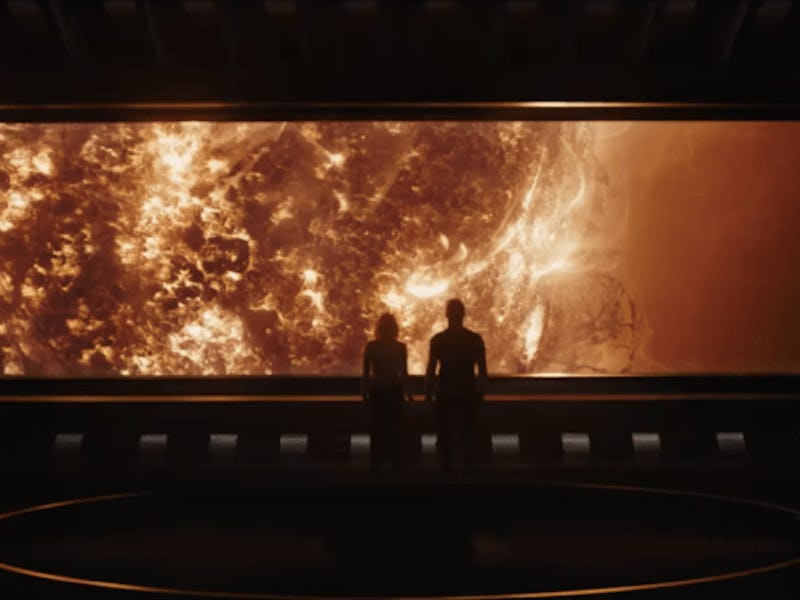Greek myths are hardly a realistic lens through which to view the world, but the tragedy of Icarus is a lesson that’s true in any context: if you get too close to the sun, you will die. There are no exceptions to this rule. Which makes the scene in Passengers, where the interstellar ship does a flyby of the sun, so peculiar. Would Chris Pratt and Jennifer Lawrence really be able to get that close to the sun to take in such a gorgeous sight? Or would they really be vaporized long before then?
The sun’s surface — the coldest part — still burns at an insane 9,940 degrees Fahrenheit. Very few things besides other suns could survive that kind of heat. A standard space suit will protect an astronaut by temperatures of up to 248 degrees Fahrenheit; still great in most instances, but extremely poor for trying to touch the sun.
The sun is about 93 million miles away from Earth, and it’s at about 3 million miles from the surface that temperatures would scorch up to above 248 degrees Fahrenheit. Relatively speaking, this is still pretty close.
But more realistically, an astronaut venturing to the sun won’t be leaving their spacecraft anytime soon. The retired Space Shuttle was reinforced with carbon-carbon heat shielding that would withstand temperatures of up to 4,700 degrees Fahrenheit — essential for making sure the crew and the vehicle could enter the Earth’s atmosphere in once piece. If a spacecraft were to be wrapped up in that kind of shielding, it would get to within 1.3 million miles of the sun. The integrity of the shielding would be compromised well before that, so, theoretically, you could make it to that distance before become fried to death.
There are a couple of other things to consider — namely that cosmic radiation would probably kill you before you reach a complete half the distance to the sun. Modern shielding against space radiation is still quite poor, and before trying to make sure astronauts won’t melt on their way to the sun, we need to make sure their bodies aren’t irradiated hellholes.
Besides that, one solution that may help future astronauts make it closer to the sun would be mirrored shielding. The 2007 film Sunshine depicted a spacecraft fitted with an incredibly huge optical shield designed to bounce the sun’s rays away — which could help ensure the spacecraft stays cool enough.
Sunshine also raises another point: just because you can get close to the sun, doesn’t mean you’ll be able to actually see the sun. You’ll need to block out the rays by about 98 percent in order to actually get a view that won’t turn you blind. The sun giveth, and the sun taketh.
